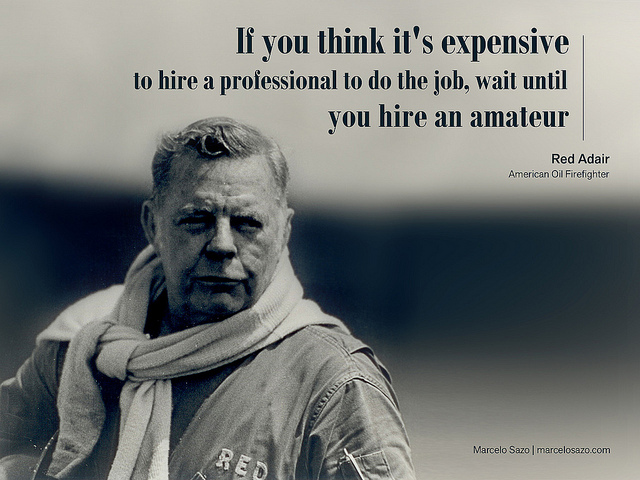Last updated on March 9th, 2019 at 03:55 pm
“Don’t ask people if they would buy – ask them to buy. The response to the second is the only one that matters… Ask ten people if they would buy your product. Then tell those who said ‘yes’ that you have ten units in your car and ask them to buy. The initial positive responses, given by people who want to be liked and aim to please, become polite refusals as soon as real money is at stake.”-Tim Ferriss
With web content the details are different — we ask the audience to “buy” not with money but with time. However, the takeaway remains the same:
Don’t ask people “would you watch this?” Ask: “did you watch this?”
In my opinion, this is the most exciting element to creating and distributing a web series. This area is where you can give the biggest proverbial “f*ck you” to the big players out there. The ability to test and make adjustments based on testing is where independent producers can fully leverage their nimbleness, their flexibility, and willingness to innovate.
Testing is cheap.
Testing is simplified.
You don’t need focus groups. You don’t need tools to measure precise emotions.
The only thing you need is a system for your testing.
Below I’ve outlined a system for testing a web series. The system itself is untested, but they’re the steps I will take with the next project. I will update the post with tweaks and lessons learned as I proceed.
Step 1: Cut a Teaser
The key word is “cut,” not “shoot.”
Cutting a teaser means splicing existing content to recreate the tone or feel of your web series. Cost is virtually zero – basically only the opportunity cost of a bomb video editor who can execute. The purpose of creating the teaser is to test your concept – are people interested?
Most recently, this is how Brandon Bestenheider and Allen Bey created buzz and sold their spec script, GRIM NIGHT to Universal.
(This example is solely to give you an example of potential power of a teaser. The goal of our teaser is not to sell or create “buzz.” The goal is to test.)
To that end, the approach is not a “let’s put it on YouTube and see what happens!”
Definitely not. This is a passive approach, and it doesn’t generate the information you’re looking for.
The teaser allows us to ask very specific questions to gauge interest in the concept. We are asking questions to find out if it has viral potential, not hoping it will go viral.
Step 2: Test the Teaser
Show the teaser to a select audience. Ask them specific questions (there are both direct and indirect ways to ask these questions.)
“What do you think of this concept?” is not a specific question. Go deeper to get answers that will help you:
- “What part of this concept interests you?”
- “What parts bored you?”
- “What do you want to see more of?”
- “Where do you think this series is going?”
When you’re testing, you can literally sit there and gauge your audience’s reaction as they watch (note: practice with close friends, not strangers you approach at Starbucks and ask, “wanna see something?”)
What is their action immediately following the video?
- Do they ask for clarification?
- Do they repeat the viewing?
- Do they want to share with others?
Caveat: it’s unlikely you’ll disqualify your concept based on the teaser, unless reactions are particularly negative or you weren’t that attached to the concept anyway. That’s why specificity of questions is important – what can you learn from your audience
Step 3: Shoot the Pilot
Based off the teaser, your team moves forward and shoots the pilot. Most likely you’re bootstrapped and shooting on the cheap. (There are proactive ways, of course, to raise funding, i.e., Kickstarter, but I’d suggest taking this step after shooting the pilot.)
Employ guerilla tactics and get the pilot shot: steal locations, get people to work for free, etc. Get the project in the can.
The traditional model is cutting the pilot and shopping it around to producers, financiers, and distributors. Obtaining interest from any one of these parties is definitely a level of success. However, there are more steps to this model of testing if you want to remain independent.
Step 4: Test the Pilot
Cut 3 to 5 versions of the pilot.
Drive an audience to different landing pages featuring these cuts. When possible, ask audience members the same questions used in the teaser. Continue to gauge what elements of the pilot are confusing, and what elements resonate with the audience. The results of this testing will provide the necessary information to shoot the rest of your series.
These steps can be grouped under the catch all phrase, “creating buzz.” Except creating buzz is a vague concept, with no call-to-action or goals. Following the steps in this model, the goal is testing – and you generate buzz as a result.
Testing allows you to create a track record. A track record you can bring with you to, say, Kickstarter, and declare “this many people watched” (not, this demographic said they would watch, or we are trying to attract this audience.) Plus, you know what elements of the pilot they liked, what confused them, and how you’re going to use that information.
Now with that homework in your back pocket, how much more powerful are you when you ask for financing?
Step 5: Shoot the Series
The next step is the biggest risk: shoot the entire series, in the most cost effective manner possible. It’s a big step, especially without a buyer locked. This is your greatest investment yet, and you’re exposing yourself to large scale of failure.
But using this system for web content creation, look at what you’ve done in the previous four steps!
You’ve mitigated your risk by constantly testing, tweaking your approach based on feedback from an actual audience, and generated buzz for your project as a result. You’ve proven to potential investors that you can write, produce and package a product independently – that you value people’s time and money.
Who wouldn’t want to work with someone like that?*
*Note: I assume the answer is everyone, but this assumption remains untested. As I mentioned at the top, these are only my initial thoughts on the system. As I apply and test, I will update this post.
Photo Credit: Nick Gent









